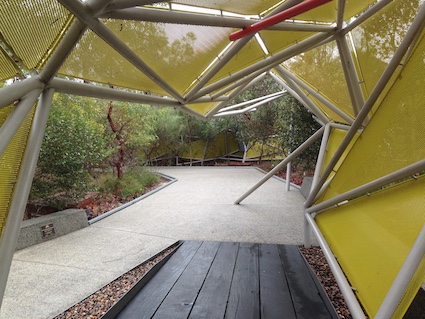
Whilst in Western Australia I had the privilege of meeting Alec Duncan, of Child’s Play Music. We met in one of Alec’s favourite places: Naturescape in Perth. In the words of the website, “…it is a place for children to connect with nature and learn to appreciate the unique Western Australian environment. It is a place to explore, climb rocks and ropes, wade through creeks, build cubbies and get dirty.“
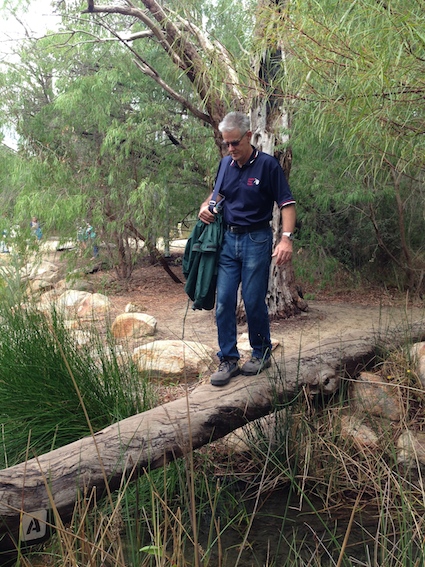
As a concept, I initially found it discomfiting. Do we really need to package nature and offer it as an attraction to families to make it something worth doing?
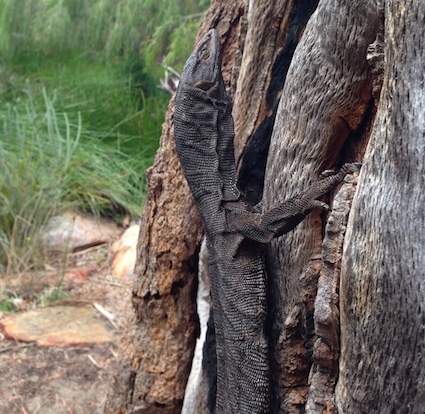
Upon reflection, I realised, humans have been doing this for centuries. After all, the traditional sporting estate in Highland Scotland is one vast “naturescape” where the environment has been deliberated altered and changed for adult play purposes, amongst other things. So in this context, Naturescape in Perth is refreshing in that at last there’s a natural place which has been specifically designed for children.
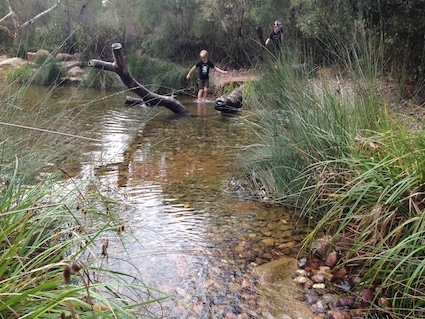
The decision to avoid calling Naturescape a playground seems sensible. As a child, I’d have been very disappointed as it would not have fitted with my traditional perception of a playground. For example, I would not have been impressed with the towers which involve a lot of queuing to get up and down. At the top, there is nothing to do but look out unless I was going to be naughty and chuck things at passers-by. And wait for an opportunity to climb down again. I would have been puzzled by the lack of slide, pole, flying fox or alternative option to get back down.
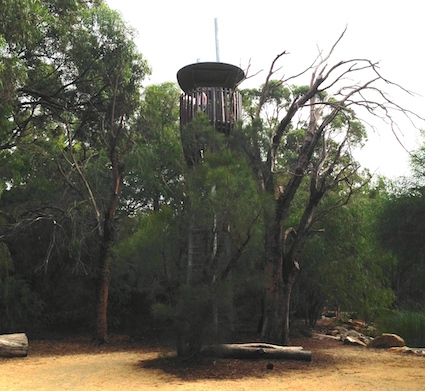
The place is bearing up well to high volumes of visitors. Although the park is closed when it reaches its capacity several hundred visitors, that’s still a lot of people and a lot of wear and tear. From this perspective, credit is due to the all involved in the design, installation and maintenance of the site.

Although there is some evidence of children wandering off the paths, there is a lack of invitations to do so, which I think helps keep a check on the environmental impact. Also, whenever I went along an informal path I always seemed to end up at a fence! For me, as a child, I would have liked secret holes or stiles or ways of getting through the fencing. This would have added a sense of risk and adventure.
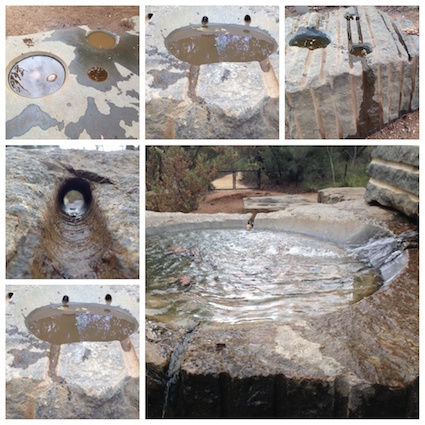
I didn’t notice any trees that were suitable for climbing. This was not a focus of the features within Naturescape. The children are too busy playing at the creek. It did intrigue me as children will generally take an opportunity to climb a tree. The Tangle does give children who want to climb a chance to do so. Sadly this was closed on the day I visited whilst repairs were being undertaken.
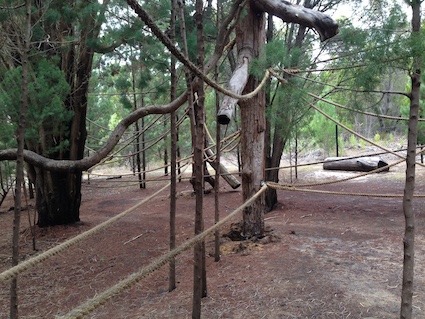
Naturescape is free to visit. It entices locals and those from further afield to visit King’s Park and Botanic Garden. It’s the sort of place my parents would have taken me for a picnic lunch because going to a theme park is too expensive for a family with four children. There’s random logs in various parts of the area which would have suited me as a child. I would be able to sit far enough away from my sisters as we would often end up arguing. Cosy secluded places for family get togethers would put us in within range of physical fighting. So clearly the designers came from big families too!
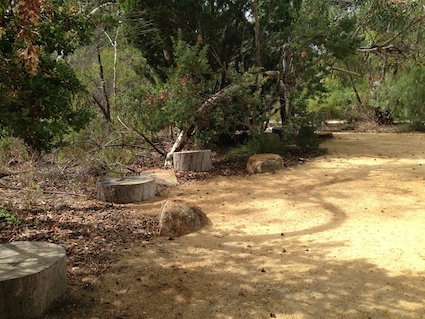
It does encourage children to interact with the landscape thus fulfilling its purpose. The main “attraction” is without a doubt Paperbark Creek. It is a wonderful place to play and it is hard to believe it is a man-made feature.
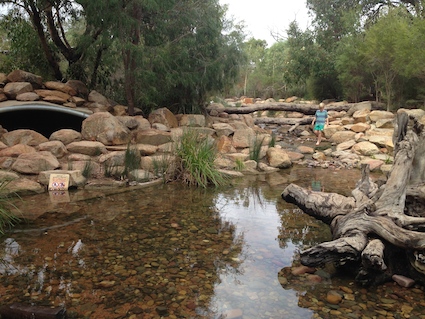
Perhaps this is a weakness of Naturescape. The design does not appear to be especially inclusive. However, this could easily be my lack of observation skills and understanding of what constitutes an inclusive outdoor environment. The myriad of formal paths are perfectly accessible. But the play features themselves are less obviously so.
The cubby section is another popular spot. The create-a-cubby metal frames have branches stacked against them and apparently keeping the area well supplied with branches is an ongoing challenge. I really liked the ground surface in this area. It was fully of disintegrated branches and almost bouncy to walk on. Curiously there were very little spaces nearby to encourage children to build their own cubbies.
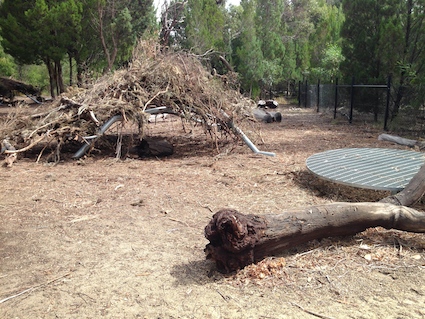
Again, I presume that was a measure to reduce wear and tear on the site. However, for many children, cubby-building is more than an act of physical construction. It’s about creating a private space they can call their own. A place to be away from adult eyes.
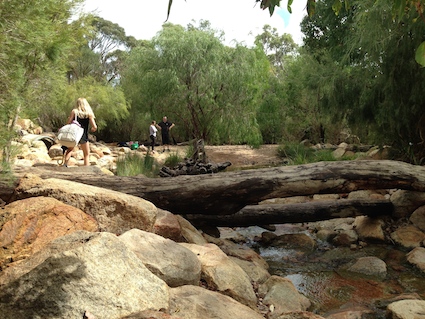
The tunnel intrigued me. I’ve seen a number of similar features whilst visiting Australia. In the UK we tend to go more for round tunnels than square ones. Anyway, it provides a bit of height for children to trot up and down in what is otherwise a flat landscape.
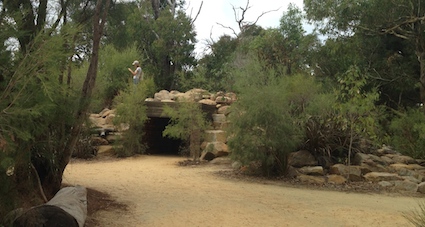
Finally, the iron cages were a secluded feature that provided great imaginary play opportunities. Each one was different and filled with an assortment of plant parts such as cones. Apparently the design is to encourage children to weave materials into the cage. I’m not so sure I’d have had the patience to do this as a child.
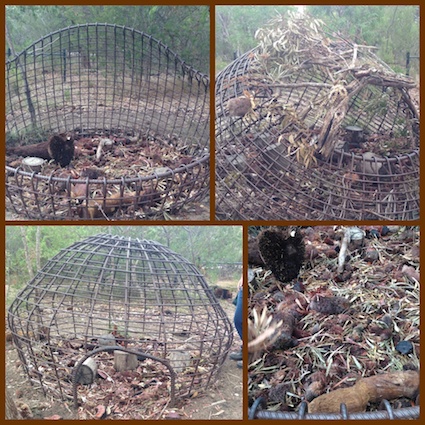
Many Early Years and other bloggers have written posts about Naturescape. Their commentary is all different and makes for great reading:
- You can read Alec’s evaluation here.
- Niki Buchan has written a couple of posts which can be seen here and here.
- A proactive Perth parent has also blogged about it on her Buggy Buddy’s blog. This includes updated photos about the redesign that happened in 2016-17 that includes the new aerial walkways and so on. Well worth a look.
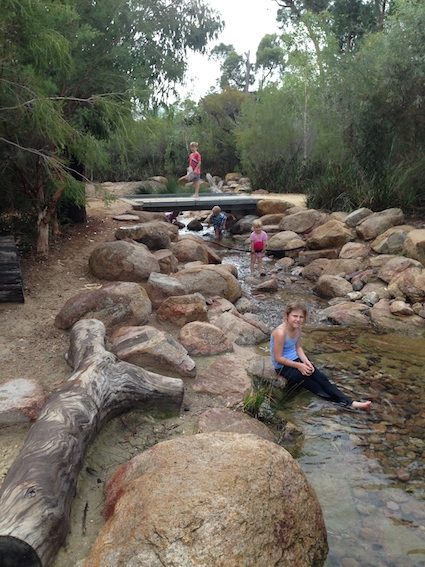
Finally I hope this makes you wonder about what children need in a play space:
- Does it have to be traditional installed play equipment?
- Should we be encouraging greater interaction with nature and creating feelings of wildness and space?
- What maintenance and ongoing investment are we prepared to make in children’s play spaces to keep them fresh and inviting? Is this about how we value play?
- Should big businesses be invited to support children’s play spaces as part of their corporate social responsibility?
This blog post is an updated version of one that was published in April 2015.




















What amazing place. Love all the natural materials used. I can imagine children spending all day and still wanting to come back for more. #CountryKids
Hi Cheryl. I think you are right here. There’s a lot of open-ended play opportunities so a child or group of children who visits regularly will get to know this place in an intimate way. I believe this can lead to more creative ways of playing.
It looks full of opportunities to inspire youngsters and chances to play. a shame the off the beaten trail paths took you to a dead ens, like you mine would be looking for the hole in the fence. I love that the play equipment looks inkeeping with the park. Thank you for sharing your find on Country Kids